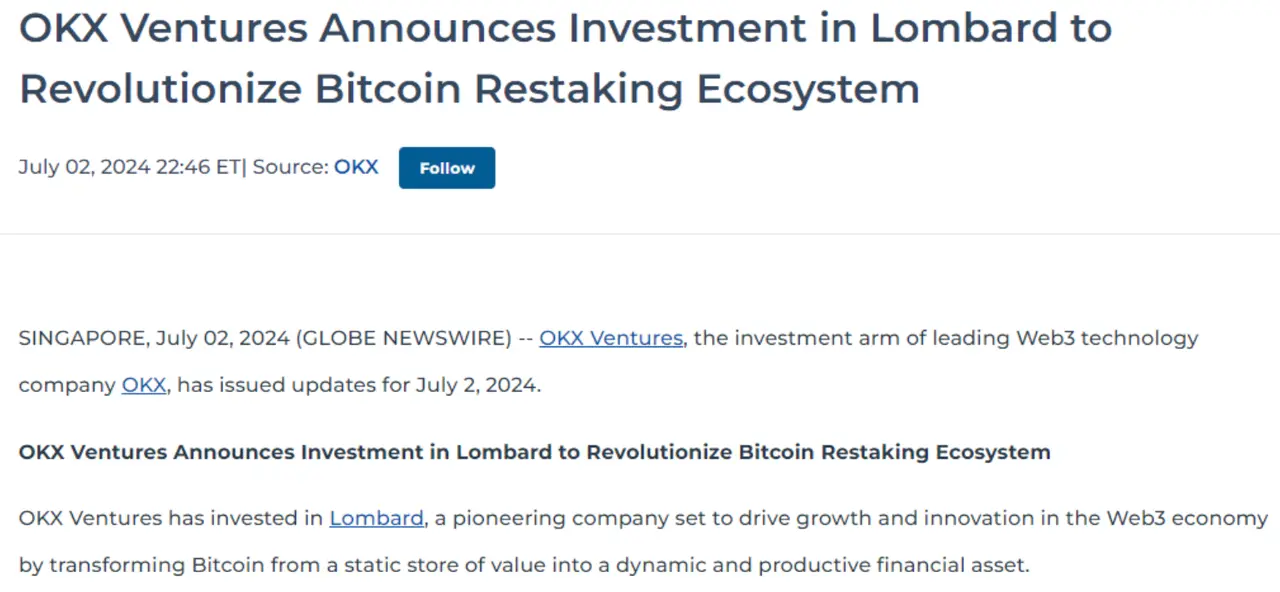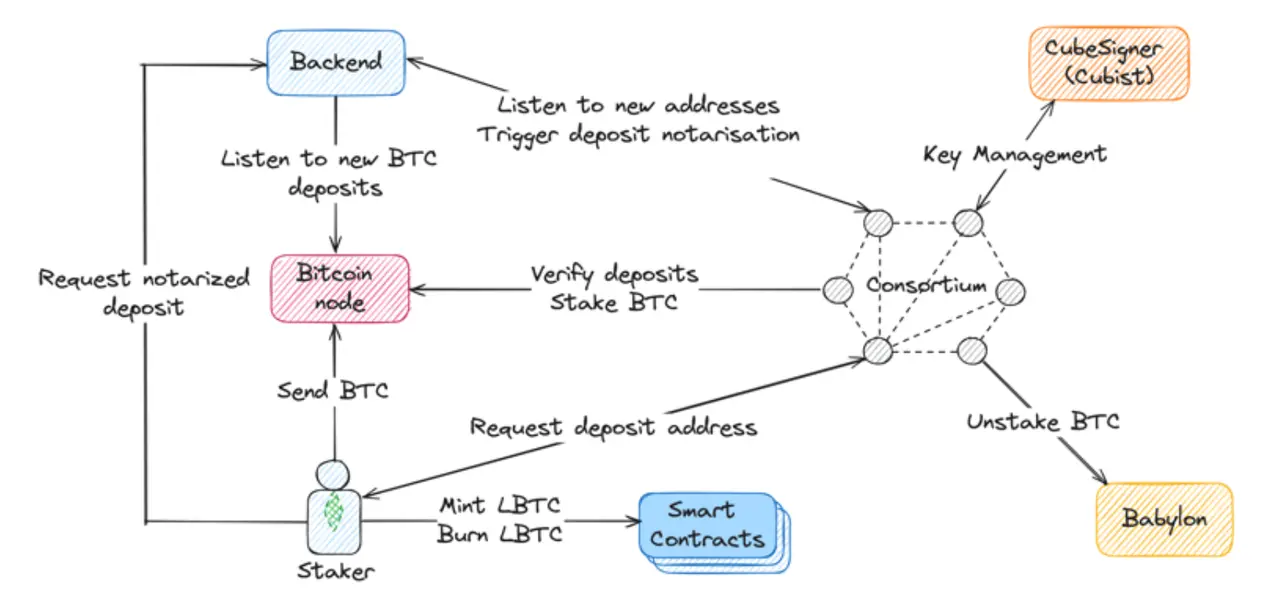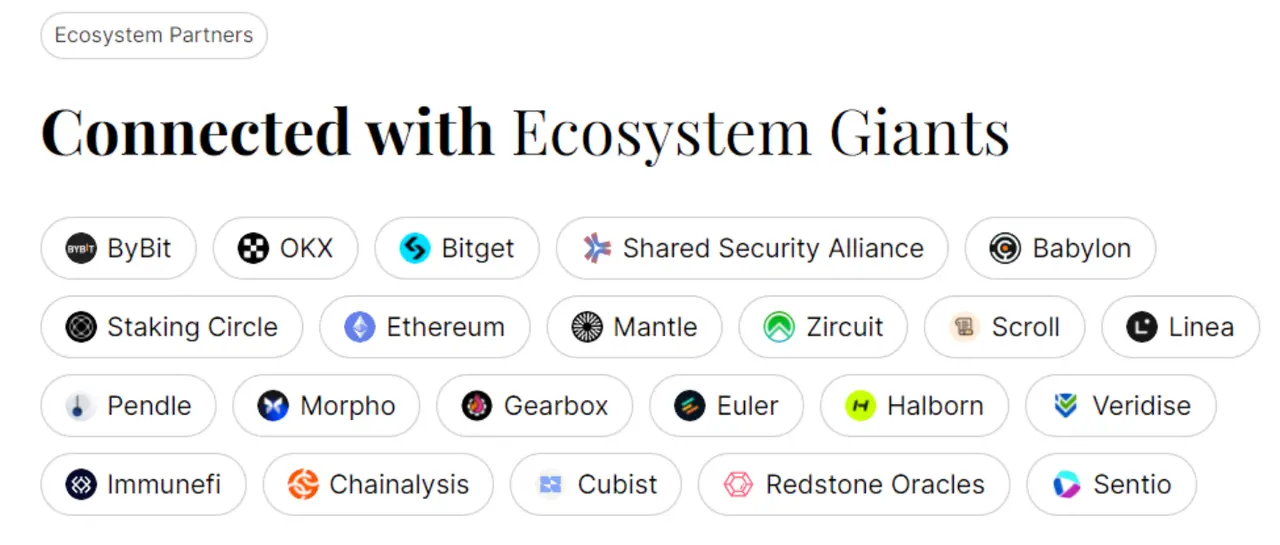Release $1.3 trillion! How does Lombard enhance BTC's passive income?
As the market capitalization of Bitcoin continues to reach new highs, many Bitcoin holders and institutions are gradually shifting their focus to how to enhance the financial attributes of Bitcoin: If you have idle BTC, how can you maximize its returns? How can you increase passive income from Bitcoin?
On July 2, OKX Ventures announced an investment in Lombard to promote innovation in the Bitcoin re-staking ecosystem. This series of initiatives not only brings new capital opportunities for Bitcoin holders but also drives the growth of the DeFi ecosystem.
Next, we will explore in detail how Lombard aims to achieve this goal.

01 Financing Support and Ecosystem Development
As an emerging force in the Bitcoin re-staking ecosystem, Lombard is quickly gaining market attention.
Lombard, based on Babylon, provides cross-chain liquid staking for Bitcoin, and it can be said that the Babylon protocol is key to Lombard's success. This protocol allows Bitcoin assets to be staked in a trustless and self-custodial manner, providing economic security for Proof of Stake (PoS) systems. Its flagship product, LBTC, enables Bitcoin assets to be seamlessly integrated into DeFi protocols on Ethereum and Layer 2 chains. LBTC, as collateral in decentralized finance, is expected to unlock over $13 trillion worth of Bitcoin for lending and trading.
Lombard recently completed a $16 million seed round of financing led by Polychain Capital, with participation from BabylonChain, Inc., dao5, Franklin Templeton, Foresight Ventures, Mirana Ventures, Mantle EcoFund, and Nomad Capital.
This funding will be used to further develop the Bitcoin re-staking ecosystem, particularly to advance the staking protocol of Babylon. Through Babylon, staked Bitcoin assets are converted into LBTC, allowing them to be seamlessly integrated into various DeFi protocols on the Ethereum mainnet and future popular Layer 2 chains.

02 The Liquidity Revolution of Bitcoin
LBTC, as Lombard's flagship product, is a yield-bearing, cross-chain, and highly liquid Bitcoin. It is backed 1:1 by BTC and achieves cross-chain liquidity and yield for Bitcoin assets through Babylon's staking protocol. This means that Bitcoin holders can not only continue to hold and store their Bitcoin but also earn yields through staking and use it in various DeFi protocols.
First, users stake Bitcoin into Babylon's staking protocol, a process secured by Babylon's decentralized validation system and secure key management system.
Then, users can mint an equivalent amount of LBTC through the Lombard platform. These LBTC can move seamlessly across chains and be used in various DeFi protocols on Ethereum and future Layer 2 chains, such as lending, trading, and staking.
The introduction of LBTC addresses the lack of native yield and cross-chain composability of Bitcoin in DeFi. By unlocking the liquidity and capital potential of Bitcoin, LBTC not only enhances the utility of Bitcoin but also drives the development of the entire DeFi ecosystem.
03 Multi-layered Components and Security Mechanisms
Lombard's technical architecture consists of multi-layered components and security mechanisms that ensure the security and efficiency of its system.
First, CubeSigner is a hardware-backed non-custodial key management platform developed by Cubist. It provides low-latency hardware support for the generation, signing, and specific applications (such as validator staking or unstaking) of cryptographic keys. CubeSigner uses AWS's HSM to encapsulate Nitro enclaves to ensure the security of the keys.
Core features of CubeSigner include:
(1) Protecting keys from theft: Keys are stored in secure hardware during generation and signing processes, preventing extraction or theft.
(2) Reducing security vulnerabilities, hacks, and insider threats: Fine-grained, revocable signing session controls prevent unauthorized access.
(3) Preventing costly errors: Allows defining custom policies for each key and uses built-in policies such as validator penalty prevention to avoid upgrade errors and vulnerabilities in validator clients.
(4) Supporting various custody setups: Users can manage their own keys or those of end users.
(5) Encrypted key import and export: Directly import and export encrypted keys to avoid key exposure.
Second, the Lombard Consortium.
The Lombard Consortium is a decentralized state machine for sharing ownership and managing assets among various members. Its main functions include:
(1) Creating and verifying deposit addresses: When users request a deposit, the Consortium creates a new Bitcoin address managed by CubeSigner.
(2) Verifying deposits and generating signature data: Confirming the existence and confirmation of deposit transactions, verifying transaction amounts and deposit addresses.
(3) Staking and unstaking Bitcoin: Selecting appropriate finality providers for staking and unstaking.
(4) Paying out unstaked Bitcoin: Handling the payment process for unstaked Bitcoin.
The Consortium is deployed on trusted network nodes using the Raft algorithm, ensuring the decentralization and security of consensus and data notarization. Members can become part of the Consortium through a multi-step approval and infrastructure deployment process, thereby participating in the governance and operation of Lombard.
Finally, smart contracts.
Lombard's smart contract system includes three main parts: (1) Consortium governance smart contracts: Reading and submitting state changes related to LBTC, ensuring all operations are transparent and verifiable. (2) ERC-20 token smart contracts: Minting and burning LBTC tokens. (3) Proxy upgrade delay smart contracts: Delaying the proxy upgrade of smart contracts by one hour to enhance security.

In addition, Lombard has implemented multi-layered protection measures for security.
Lombard uses Cubist's multi-factor authentication wallets (MFA Wallets), requiring multiple security checks and approvals for each transaction to prevent unauthorized access. Additionally, Lombard's transactions are verified and notarized by the Lombard Consortium, composed of industry leaders, ensuring decentralized security.
Through a series of innovative initiatives and strong security guarantees, Lombard is gradually achieving its goals, bringing more opportunities and growth space for Bitcoin holders and the entire DeFi ecosystem.
Conclusion
Lombard's rapid development and significant achievements are supported by its strong ecosystem of partners. Establishing partnerships with numerous industry giants allows Lombard to receive comprehensive support and guarantees in technology, market, and security.
Exchanges like ByBit, OKX, and Bitget provide Lombard with extensive market access and liquidity support, helping to promote LBTC and enhance its market influence; Shared Security Alliance and Babylon, as core partners of Lombard's staking protocol, provide seamless and secure support for staking Bitcoin assets, while Shared Security Alliance offers additional security guarantees; Staking Circle, Ethereum, Mantle, Zircuir, Scroll, Linea: These blockchain platforms and infrastructure projects provide technical support for LBTC's cross-chain integration and compatibility, enabling it to operate seamlessly across different blockchain networks.

In summary, Lombard is leading the innovation of the Bitcoin re-staking ecosystem, unlocking the immense potential of Bitcoin in DeFi through its flagship product LBTC and collaboration with the Babylon protocol. With the completion of the $16 million seed round financing, Lombard will continue to advance the development of its ecosystem, providing users with more liquidity and yield opportunities.
The future development of Lombard is promising.










